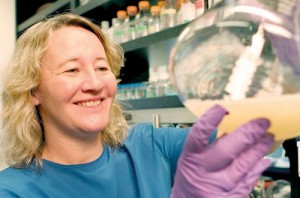Sunday Times 2
Have we found the key to eternal youth?
Eternal youth could be one step closer following the successful transformation of old human cells into young ones.

Carol Greider, who shared the 2009 Nobel Prize for Medicine with Elizabeth Blackburn and Jack Szostak for discovering how chromosomes are protected by telomeres (AFP)
The process increases the length of the ‘telomeres’, which are the protective caps on the end of chromosomes that impact ageing and disease.
Researchers in the US say the technique could extend human life and provide new hope for battling diseases that arise from old age. Telomeres — often described as being like the plastic caps on the end of shoelaces — help keep DNA healthy.
These protective end caps become shorter with each DNA replication, and eventually are no longer able to protect DNA from sustaining damage and mutations, causing people to age.
In young people, telomeres are about 8,000-10,000 organic molecules, or nucleotides, long.
‘Now we have found a way to lengthen human telomeres by as much as 1,000 nucleotides, turning back the internal clock in these cells by the equivalent of many years of human life,’ said Helen Blau of Stanford University.
To make the discovery, researchers used modified messenger RNA to extend the telomeres.
RNA carries instructions from genes in the DNA to the cell’s protein-making factories.
The RNA used in this experiment contained the coding sequence for TERT – the active component of a naturally occurring enzyme called telomerase.
When the cells are treated, they behave as if they are younger and multiply quickly rather than dying.
‘One day it may be possible to target muscle stem cells in a patient with Duchenne muscular dystrophy, for example, to extend their telomeres,’ said Dr Blau.
‘There are also implications for treating conditions of aging, such as diabetes and heart disease.
‘This has really opened the doors to consider all types of potential uses of this therapy.’
The researchers also hope that the method will be able to allow scientists to generate large numbers of cells that could someday lead to an effective anti-aging drug.
© Daily Mail, London

